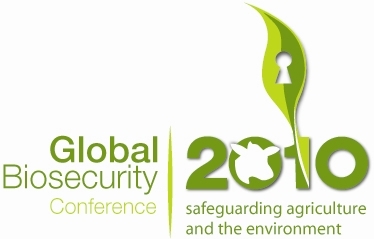You are here: Home > Wildlife diseases threaten biodiversity and human health
Wildlife diseases threaten biodiversity and human health
Global Biosecurity Media Relese: 9 December 2009
The increasing number of infectious diseases emerging in wildlife could have dire consequences for the level of biodiversity in the environment and for human health.
Investigating these infectious and deadly diseases is vital to safeguarding Australia’s privileged biosecurity status.
Dr Lee Skerratt is one of those at the front-line managing Australia’s wildlife biosecurity and will present at the first international Global Biosecurity Conference in Brisbane next year.
“A high proportion of Australia’s wildlife is endemic, that is, they are only found in Australia.”
However, of these, 20% of mammals, 8% of birds, 5% of reptiles, 14% amphibians and 1% fish are threatened with extinction and infectious disease can be significant contributor to such extinctions.”
Dr Skerratt said infectious diseases in wildlife also have the potential to be zoonotic which means they can infect both animals and humans.
“During the past five years, we have seen the likes of bird flu; Hendra virus and swine flu captivate the world’s attention.”
“These infectious diseases spill over from the wild usually to domestic animals and then to humans, creating increased public health costs through preventative and post-exposure treatments as well as economic impacts on primary industry and trade and Australia’s biosecurity.”
“Through research into detecting and diagnosing endemic, emerging and exotic diseases of wildlife, we are not only helping to protect the health and biodiversity of Australian wildlife but also human health and the economy.”
Dr Skerratt says while veterinary and human medicine is relatively proficient at managing disease; wildlife medicine is much less capable than what the public might expect.
“We have very limited baseline knowledge of the diseases that affect wildlife species.”
“This is because very few wildlife mortality (death) or morbidity (sickness) events have been reported and investigated.”
In addition to this general global inability, Australia trails well behind other developed countries like Canada, the USA and European countries in terms of coordination and use of capacity and resources to manage wildlife diseases.
“The unimpeded spread of Tasmanian devil facial tumour disease is a perfect example,” Dr Skerratt said.
“Disease is causing the worst crisis for vertebrate biodiversity in Australia for two centuries, reducing numbers of the Tasmanian Devil population by 50% during the past 10 years.
“A fungal disease called chytridiomycosis (or chytrid for short) is thought to have recently caused the extinction of eight species of Australian frogs including the remarkable gastric brooding frogs and threatens many more.”
Dr Skerratt says there are two key requirements for more effective wildlife disease management in Australia.
“One is the need to increase resources and capacity for the Australian Wildlife Health Network which coordinates management of wildlife diseases in Australia.”
“The second is the need to undertake research to better understand emerging diseases of Australian wildlife and how to manage those diseases more efficiently.”
“At the moment the system is mostly reactive, rather than proactive and playing catch-up with wildlife diseases is tough. They can spread like wildfire”
“Dealing with risk is much more efficient.”
“Using an integrated approach of resources and expertise across the biosecurity continuum and the health profession to ensure the links among wildlife, domestic animals and humans are not duplicated is essential.”
Understanding the risks of potential biosecurity issues will form the basis of the Threats and Impacts stream of the Global Biosecurity 2010 Conference to be held in Brisbane from 28 February – 3 March 2010.
The conference is a partnership event between the CRC for National Plant Biosecurity, Australian Biosecurity CRC for Emerging Infectious Disease and the Invasive Animals CRC.
The Global Biosecurity 2010 Conference is sponsored by: the Grains Research and Development Corporation (GRDC); the Australian Centre of Excellence for Risk Analysis (ACERA); and the Australian Government’s Australian Quarantine and Inspection Service (AQIS).
Registrations for the conference are now open. Visit www.globalbiosecurity2010.com
Media contact l Laureta Wallace
P (08) 6250 4561
| Attachment | Size |
|---|---|
| 091209 GB2010 Media Release.pdf | 100.2 KB |


